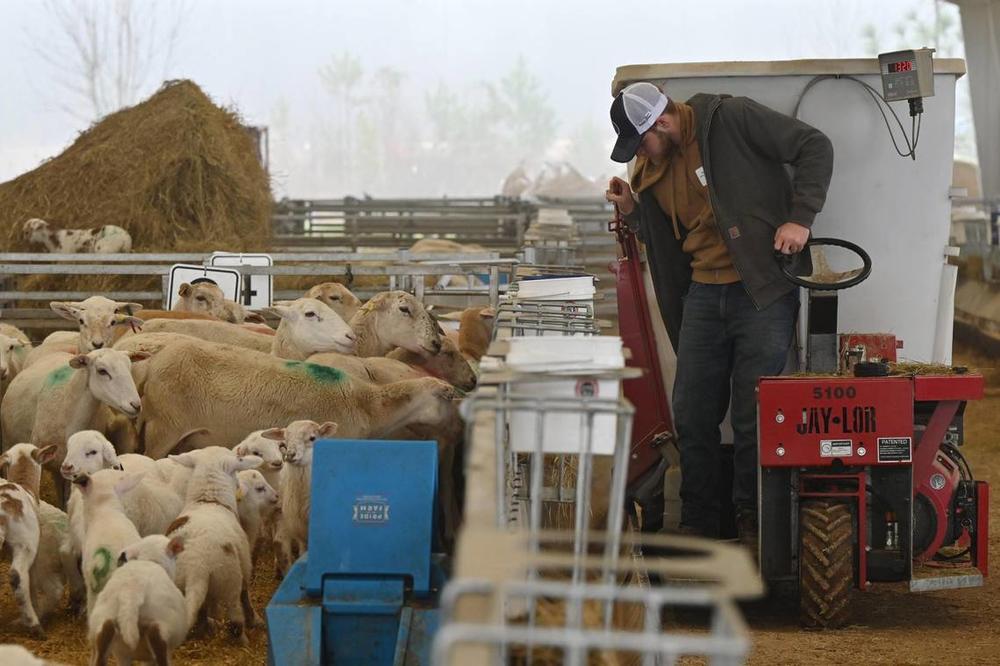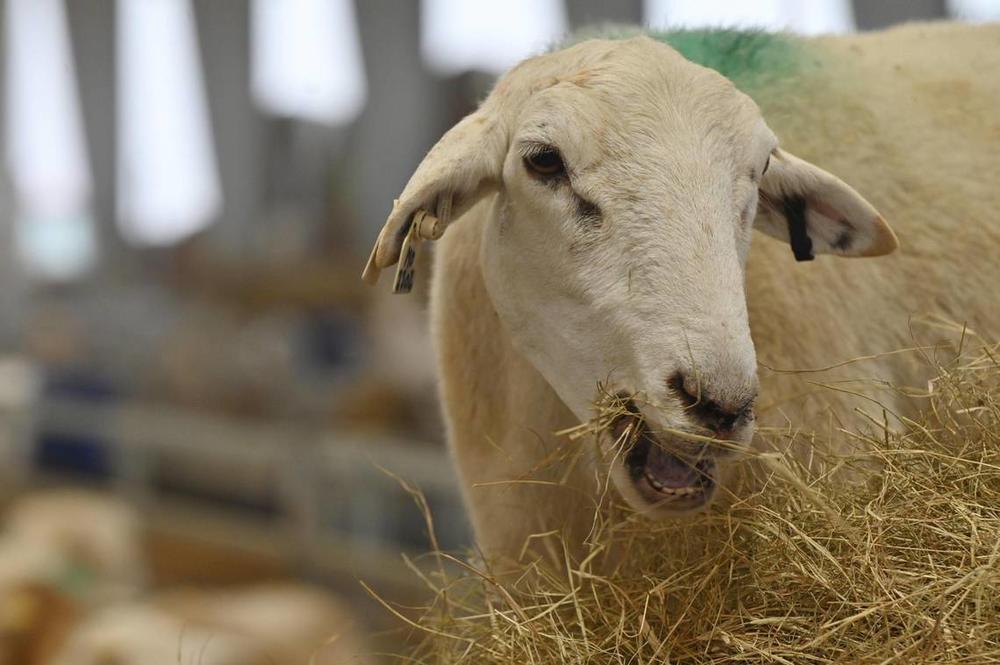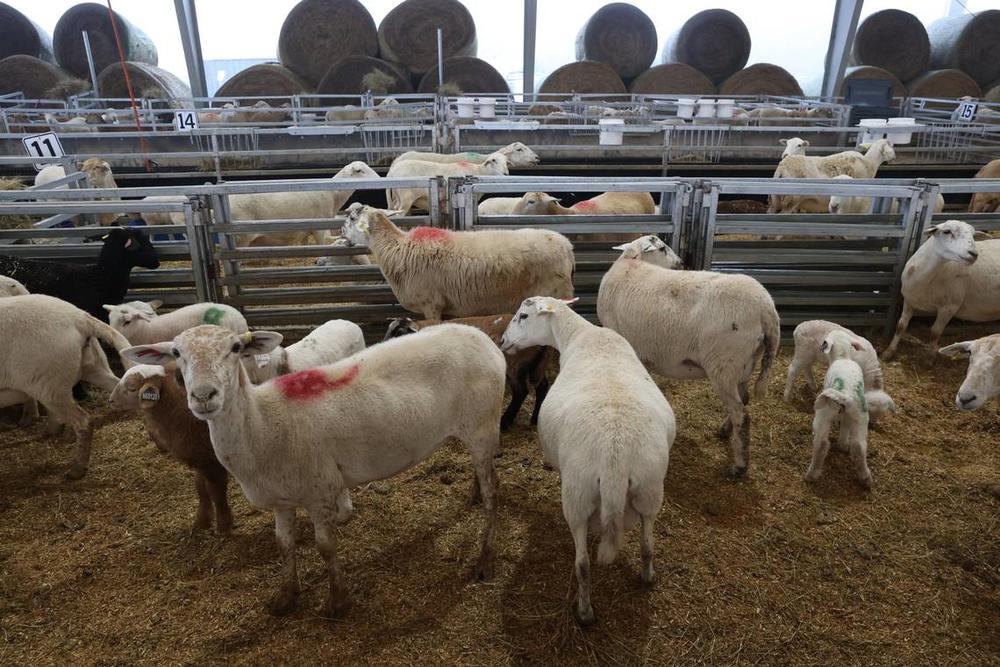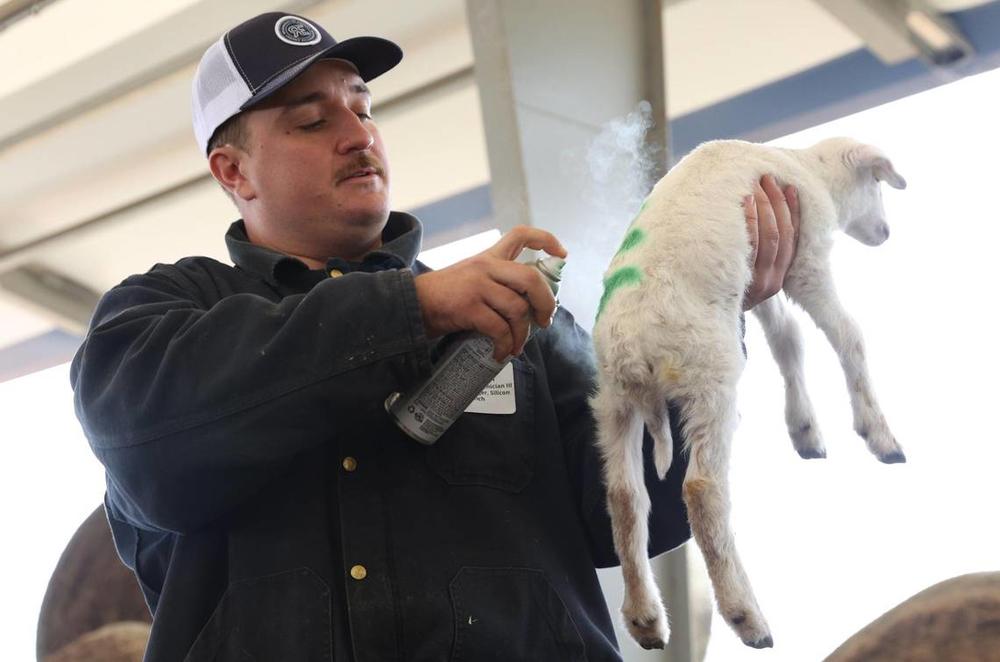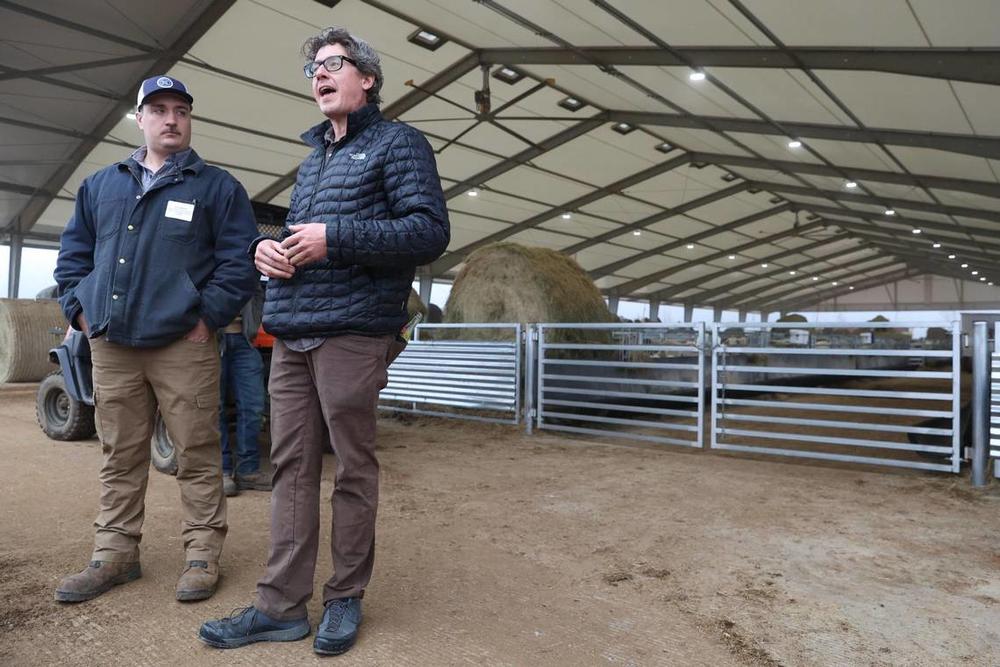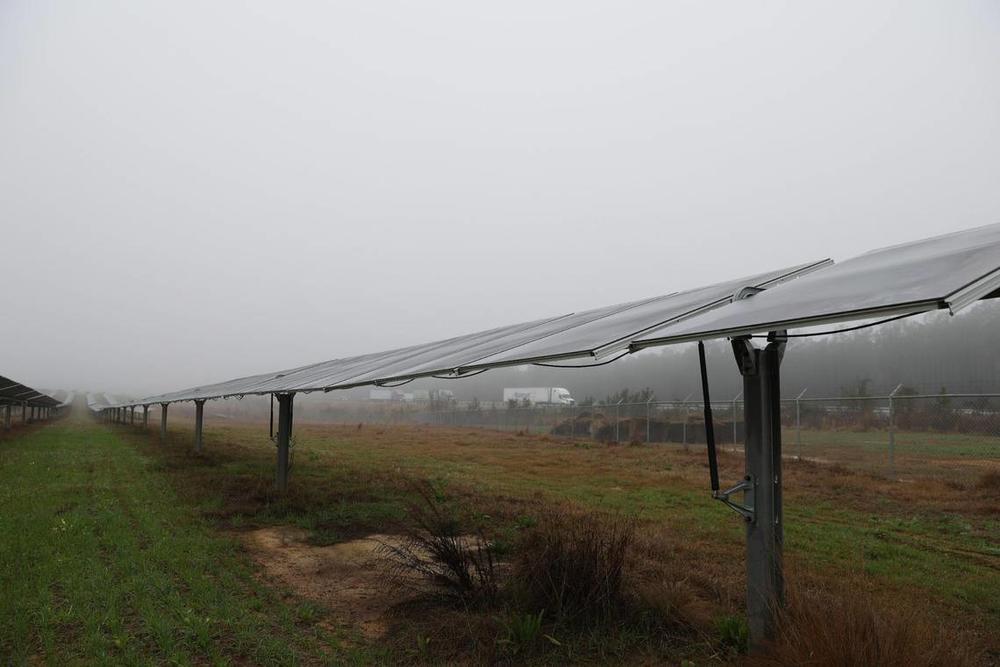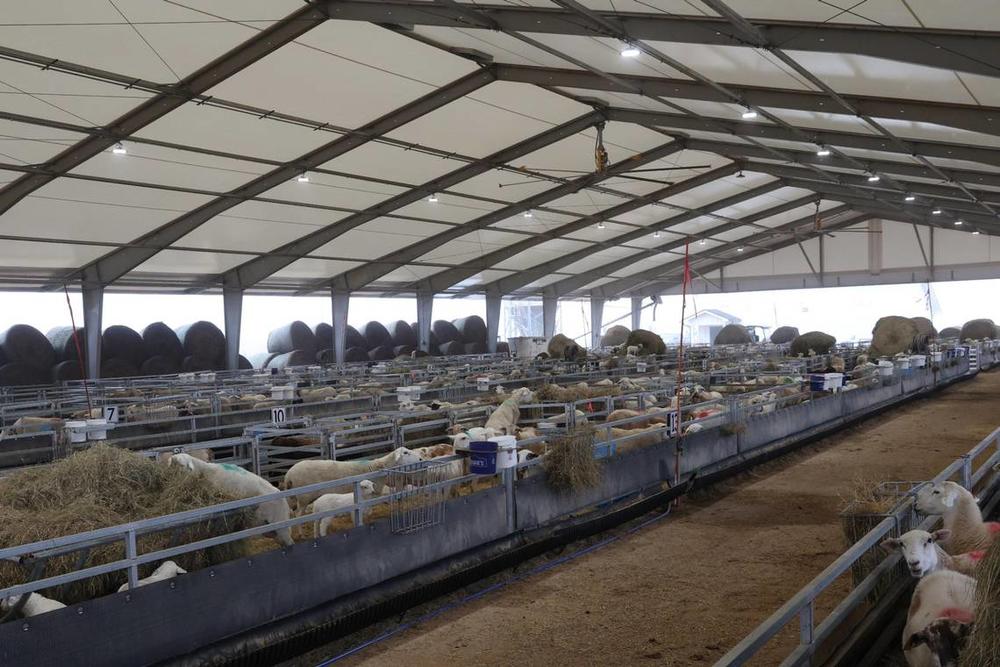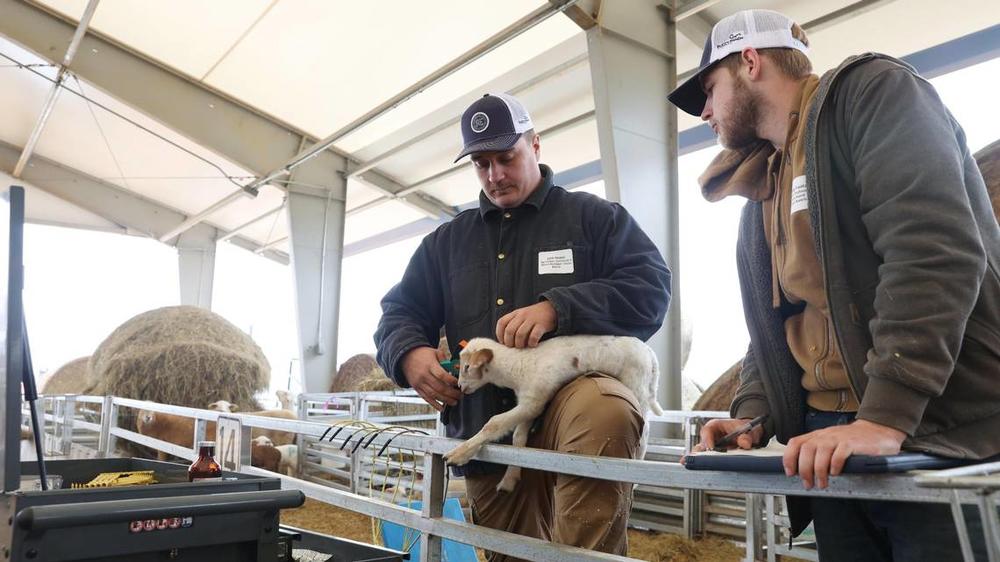
Caption
Houston Solar Project ranch manager Jack Mason (left) tags a lamb’s ear while Houston Solar Project ranch hand Buddy Faatz assists on Wednesday, Feb. 14, 2025, at Houston Solar in Elko, Georgia. Before lambs and their families are released into the pasture, ranch staff tag lambs’ ears with a Bluetooth chip tag that will track their weight throughout their lives.
Credit: Katie Tucker/The Telegraph
